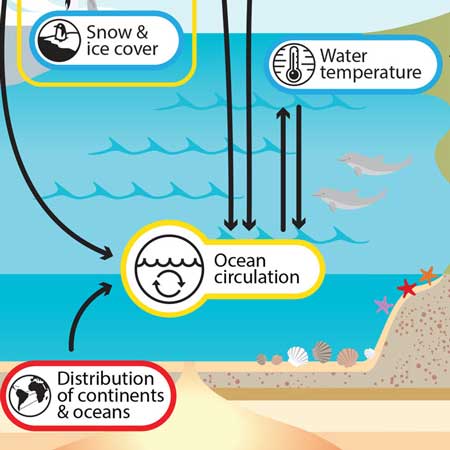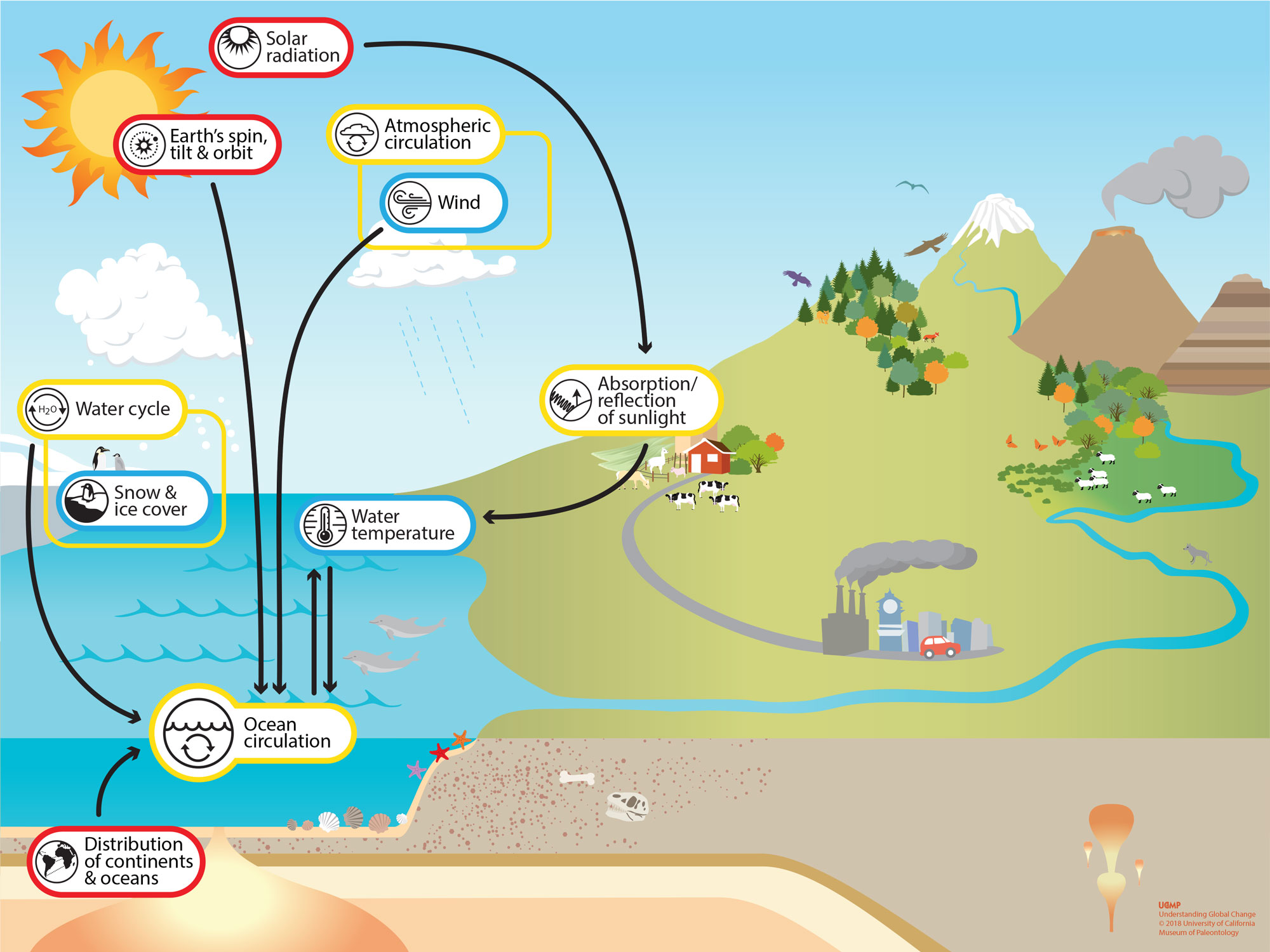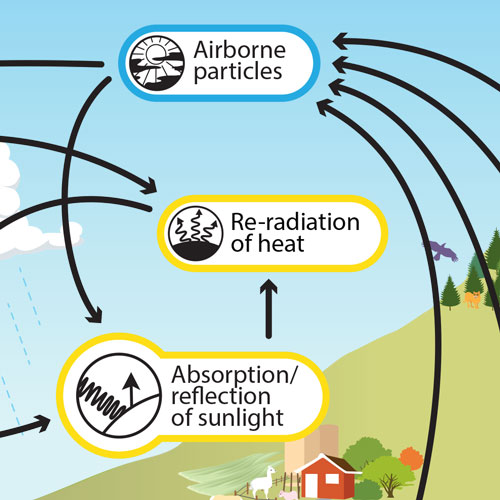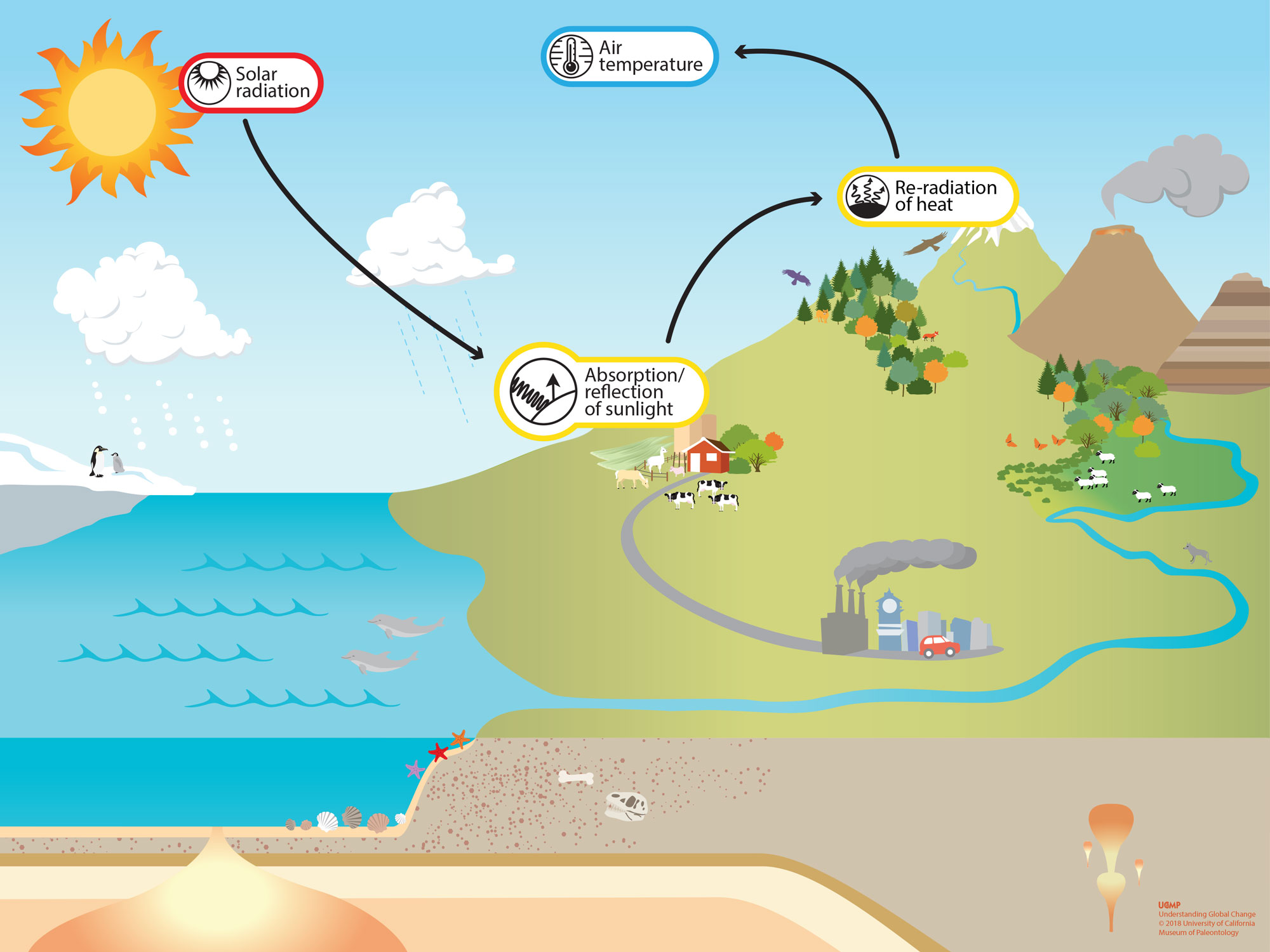Which Best Describes the Way Sunlight Creates Ocean Currents
This rising warm air makes the cooler air from the surrounding areas come in to replace it. The movement of the ocean water is caused by forces acting on the water including the breaking waves salinity differences Coriolis effects the wind temperatures and cabbeling.

Ocean Circulation Understanding Global Change
When the moons orbit is farthest from the earth it is called as apogeeTidal ranges will be much less than the average during this period.

. These wind patterns convection cells are created by radiation from the Sun beating down on Earth and generating heat. Large-scale surface ocean currents are driven by global wind systems that are fueled by energy from the sun. Which best describes the way sunlight creates global ocean currents.
Heat from the sunlight is then dispersed within the top 100 meters of the ocean by waves. Sunlight warms the waters on the ocean surface. Water chilled by colder temperatures at high latitudes contracts thus gets denser sinks and moves.
Keep this energy concentrated in one region of the globe. Some heat energy is transferred to cooler waters through convection. Wind is not the only factor that affects ocean currents.
The water cycle the subject of a multi-part series of stories beginning today provides nearly all the fresh water consumed by plants and animals. It is the position where the earth is farthest from the sun. During the process of convection water that was warmed by the sun loses heat.
The heat in the water is carried to higher latitudes by ocean currents where it is released into the atmosphere. Ocean currents are driven by wind water density differences and tides. Solar heat absorbed at the equator causes water to expand.
Surface wind-driven currents generate upwelling currents in conjunction with landforms creating deepwater currents. Patterns of surface currents are determined by wind direction Coriolis forces from the Earths rotation and the position of landforms that interact with the currents. Ocean current is a directed permanent or continuous movement of oceans water.
In this way heated water raises the normal level of the sea surface. The suns energy drives the water cycle which determines precipitation. Sunlight causes water to evaporate from.
Sink below cooler waters creating ocean currents. Warmer waters sink below cooler waters creating ocean currents. Surface ocean currents are driven by consistent wind patterns that persist throughout time over the entire globe such as the jet stream.
Some heat energy is transferred to cooler waters through convection. The suns energy powers the water cycle by causing runoff which leads to precipitation. Move only toward the equator as a result.
Sunlight warms the waters on the ocean surface. The Sun dumps a lot of thermal energy by sunlight into the atmosphere and especially into the oceans. Which best describes the best way sunlight creates ocean currents.
Which best describes the way sunlight creates ocean currents. The Coriolis effect describes how Earths rotation steers winds and surface ocean currents. Describe how ocean currents can affect a moving object.
It is the position where the earth is closest to the sun around January 3 rdUnusual high and low tides occur during this time. Surface currents in the ocean are driven by global wind systems that are fueled by energy from the sun. So as the warmer ocean waters begin to rise in a particular area.
It all starts with surface currents carrying warm water north from the equator. Warm currents carry warm water from the tropics to. Water in the surface currents is pushed in the direction of the major wind belts.
Which best describes the best way sunlight creates ocean currents. 1 Show answers. The impact of the sunlight on the water molecules when directly overhead warms the surface of the water and creates a warm water current as it heats the air above it and through this the warm water rise and then moves to the places of the cooler water mas and hence creating of an ocean current.
In contrast to wind-driven surface currents deep-ocean currents are caused by differences in water density. Oceanic currents are driven by three main factors. One way that the worlds ocean affects weather and climate is by playing an important role in keeping our planet warm.
The sun heats up parts of the ocean waters. The changes in current movements affect the coastal climate by carrying a lot of heat. The process that creates deep currents is called thermohaline circulationthermo referring to temperature and haline to saltiness.
Move only away from the equator as a result. Sunlight warms the waters on the ocean surface. Correct answer to the question Which best describes the way sunlight creates global ocean currents.
Ocean currents act much like a conveyor. These 100 meters of ocean can absorb. Currents are generally measured in meters per second or in knots 1 knot 185 kilometers per hour or 115 miles per hour.
The cycle begins when the top one meter of the ocean absorbs sunlight. Basically currents arise as warm equatorial waters move to the NORTH carrying heat and as part of this flow the cold polar waters go south and there get heated. Ocean currents operate similarly.
Oceanic currents describe the movement of water from one location to another. Sunlight warms the waters on the ocean surface. Due to the Earths shape and orientation areas near the equator receive the greatest amount of energy from the Sun.
Some heat energy is transferred to cooler waters through convection. The causes of the global wind patterns will be described in detail later when we look at the atmosphere. The suns energy creates surface currents in oceans that bring precipitation to different areas.
The ocean has an interconnected current or circulation system powered by wind tides the Earths rotation Coriolis effect the sun solar energy and water density differences. These currents transfer heat from the tropics to the polar regions influencing local and global climate. Sunlight heats air forming strong winds that push currents What most likely causes the movement of warm surface ocean currents.
The topography and shape of ocean basins and nearby. This then creates the wind. The majority of radiation from the sun is absorbed by the ocean particularly in tropical waters around the equator where the ocean acts like a massive heat-retaining solar panel.

Ocean Circulation Understanding Global Change

Absorption Reflection Of Sunlight Understanding Global Change
Climate Science Investigations South Florida Temperature Over Time

Absorption Reflection Of Sunlight Understanding Global Change
No comments for "Which Best Describes the Way Sunlight Creates Ocean Currents"
Post a Comment